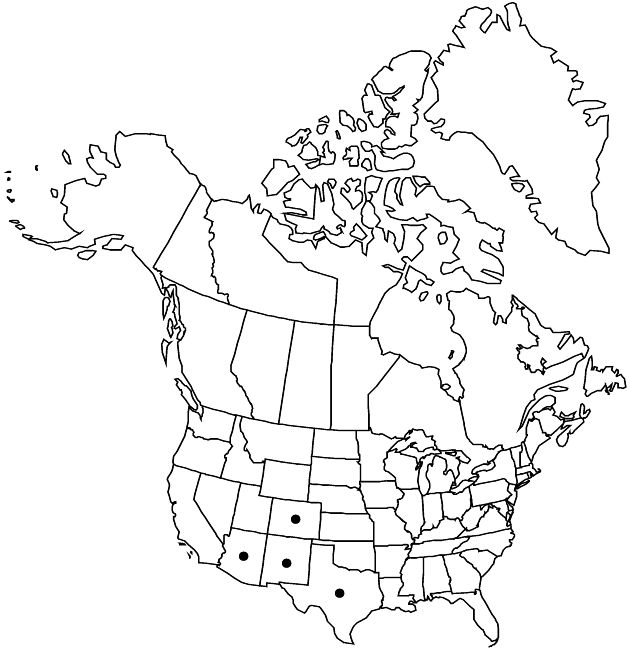Senecio wootonii
Bull. Torrey Bot. Club 25: 122, plate 331, figs. 1, 2. 1898.
Perennials, (15–)20–45(–60) cm (caudices erect or weakly spreading). Herbage nearly always glaucous, glabrous. Stems single or clustered. Leaves (thickish and turgid) progressively reduced distally; petiolate; blades ovate or obovate to lanceolate, 4–9(–15+) × 1.5–3(–4+) cm, bases tapered, margins wavy or subentire (often with callous denticles; mid and distal leaves sessile, bractlike). Heads (3–)8–24+ in corymbiform arrays. Calyculi of 1–3+ oblong to lance-linear bractlets (less than 3 mm). Phyllaries ± 13 (± 21), 6–9 mm, tips green to brownish (not blackened). Ray florets 8–10; corolla laminae 4–10 mm. Cypselae glabrous. 2n = 40.
Phenology: Flowering spring–summer.
Habitat: Damp or drying sites, often in rocky, moderately disturbed sites
Elevation: 2000–3500 m
Distribution

Ariz., Colo., N.Mex., Tex., Mexico.
Discussion
Senecio wootonii reaches its southern limit in Coahuila and Chihuahua, Mexico; farther south, it is replaced by S. toluccanus de Candolle, a similar, larger, more robust species.
Selected References
None.